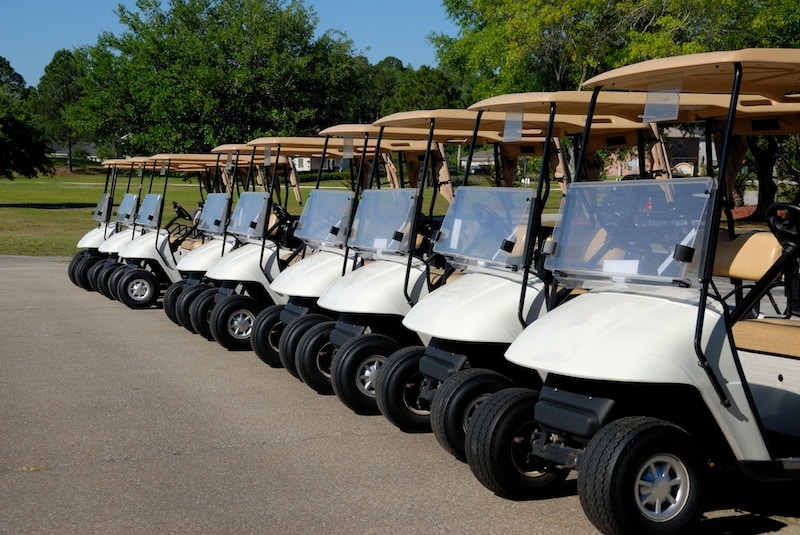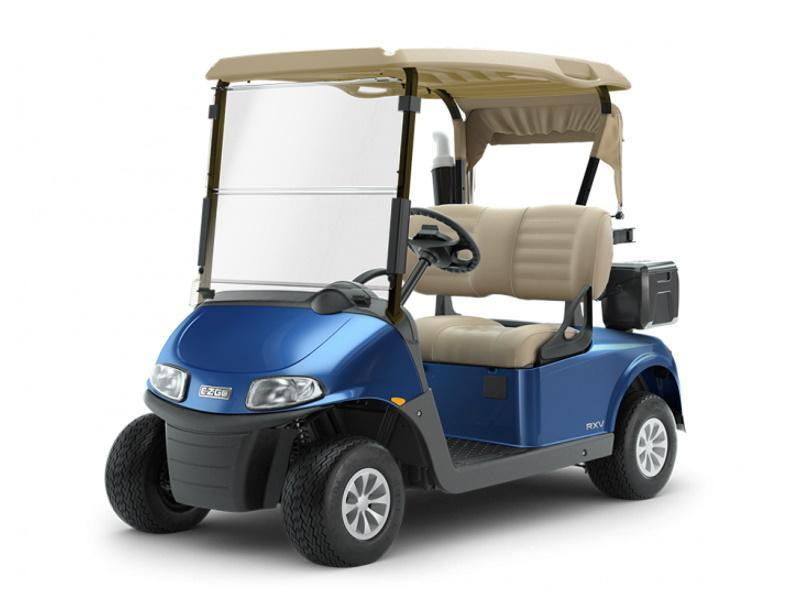Content Menu
● Understanding the Components of an Electric Golf Cart
● Common Symptoms of Motor Issues
● Step-by-Step Troubleshooting Guide
>> Check the Batteries
>> Inspect the Wiring
>> Listen for Solenoid Activation
>> Examine the Charger
>> Test the Potentiometer
>> Resetting the Motor
>> Inspect Motor Connections
>> Check Motor Brushes
>> Examine Motor Housing
● Additional Troubleshooting Tips
>> Check for Faulty Controller
>> Inspect Fuses
>> Monitor for Unusual Noises
● When to Seek Professional Help
● Preventative Maintenance Tips
● Conclusion
● FAQ
>> 1. What should I do if my golf cart won't start?
>> 2. How often should I check my golf cart's batteries?
>> 3. What causes my golf cart to surge while driving?
>> 4. How do I know if my solenoid is faulty?
>> 5. Can I repair my electric golf cart motor myself?
Electric golf carts are popular for their eco-friendliness and ease of use. However, like any machine, they can encounter issues over time. Troubleshooting the electric motor of a golf cart is essential for maintaining its performance and longevity. In this guide, we will explore various troubleshooting techniques, common problems, and solutions to ensure your electric golf cart runs smoothly.

Understanding the Components of an Electric Golf Cart
Before diving into troubleshooting, it's important to understand the key components involved in the operation of an electric golf cart:
- Batteries: Provide power to the motor.
- Motor: Converts electrical energy into mechanical energy.
- Controller: Regulates power delivery from the batteries to the motor.
- Solenoid: Acts as a switch to control the flow of electricity.
- Potentiometer: Controls speed based on accelerator pedal position.
Common Symptoms of Motor Issues
When troubleshooting your electric golf cart motor, you may encounter several symptoms indicating potential problems:
- The cart does not start or respond when the key is turned.
- The motor makes unusual noises (grinding, clicking).
- The cart moves sluggishly or surges unexpectedly.
- There is a noticeable decrease in speed or power.
Step-by-Step Troubleshooting Guide
Check the Batteries
The first step in troubleshooting is to ensure that the batteries are functioning properly. Here's how to check:
- Voltage Test: Use a voltmeter to measure each battery's voltage. A fully charged battery should read around 12.6 volts. If any battery reads below 12 volts, it may be depleted.
- Inspect Water Levels: Ensure that water levels in lead-acid batteries are adequate. The plates should be covered but not overfilled.
- Clean Terminals: Remove corrosion from battery terminals using a mixture of baking soda and water.
Inspect the Wiring
Loose or corroded wiring can disrupt the flow of electricity.
- Visual Inspection: Check all wiring connections for signs of wear, fraying, or corrosion.
- Secure Connections: Ensure all connections are tight and secure to prevent intermittent power loss.
Listen for Solenoid Activation
The solenoid should click when you turn the key:
- Testing: With the key turned on, listen for a clicking sound from the solenoid. If there is no click and the batteries are charged, consider replacing the solenoid.
Examine the Charger
A malfunctioning charger can prevent batteries from charging properly:
- Check Outlet: Ensure that the outlet is working by testing it with another device.
- Inspect Charger Connections: Look for any signs of damage or corrosion on charger cables and connectors.

Test the Potentiometer
The potentiometer controls speed based on pedal position:
- Visual Inspection: Look for cracks or broken connections.
- Electrical Testing: Use a multimeter to ensure that it sends a proper signal to the controller when pressed.
Resetting the Motor
Sometimes, resetting the motor can resolve minor issues:
- Locate Reset Button: Find the small red reset button on or near the motor.
- Press Reset: After pressing it, reassemble your cart and attempt to start it again.
Inspect Motor Connections
Check connections directly at the motor:
- Tighten Connections: Ensure all wires connected to the motor are secure and free from corrosion.
Check Motor Brushes
Worn brushes can lead to performance issues:
- Inspect Brushes: Remove the motor cover and check brushes for wear. Replace if necessary.
Examine Motor Housing
Debris inside the motor housing can cause problems:
- Clean Housing: Remove any foreign objects or debris that may interfere with operation.

Additional Troubleshooting Tips
In addition to these steps, consider these additional tips that can help you troubleshoot your electric golf cart motor effectively:
Check for Faulty Controller
The controller regulates power sent to the motor:
- Testing Controller: If your cart starts but doesn't accelerate properly, there might be an issue with the controller itself. Testing requires specialized knowledge; consult a professional if needed.
Inspect Fuses
Fuses protect electrical circuits from overloads:
- Check Fuses: Locate and inspect any fuses related to your golf cart's electrical system. Replace any blown fuses as necessary.
Monitor for Unusual Noises
Strange noises coming from your golf cart can indicate specific issues:
- Identify Sounds: Grinding noises may suggest internal damage within the motor, while clicking sounds could point towards electrical connection issues.
When to Seek Professional Help
If you've gone through these troubleshooting steps and your electric golf cart still isn't functioning properly, it may be time to consult a professional mechanic who specializes in golf carts. They can provide more advanced diagnostics and repairs that may require specialized tools or expertise.
Preventative Maintenance Tips
To keep your electric golf cart running smoothly and avoid future issues, consider implementing these preventative maintenance tips:
- Regularly check battery levels and clean terminals.
- Inspect wiring and connections periodically for wear or corrosion.
- Keep your golf cart clean and free from debris.
- Schedule regular maintenance checks with a professional service provider.
Conclusion
Troubleshooting an electric golf cart motor involves systematic checks of various components including batteries, wiring, solenoids, chargers, potentiometers, and more. By following this guide, you can identify common issues and take appropriate steps to resolve them, ensuring your golf cart remains in good working condition for many rounds on the course.

FAQ
1. What should I do if my golf cart won't start?
Check if the batteries are charged and properly connected. Inspect wiring for loose connections and listen for solenoid activation when turning on the key.
2. How often should I check my golf cart's batteries?
It's advisable to check your batteries at least once a month for charge levels, water levels (if applicable), and signs of corrosion at terminals.
3. What causes my golf cart to surge while driving?
Surging can be caused by worn motor brushes, poor connections in wiring, or issues with the potentiometer sending erratic signals to the controller.
4. How do I know if my solenoid is faulty?
If you do not hear a clicking sound when trying to start your cart with charged batteries, it may indicate a faulty solenoid that needs replacement.
5. Can I repair my electric golf cart motor myself?
Basic troubleshooting and minor repairs can often be done by yourself if you're comfortable with tools; however, significant repairs may require professional assistance.











































